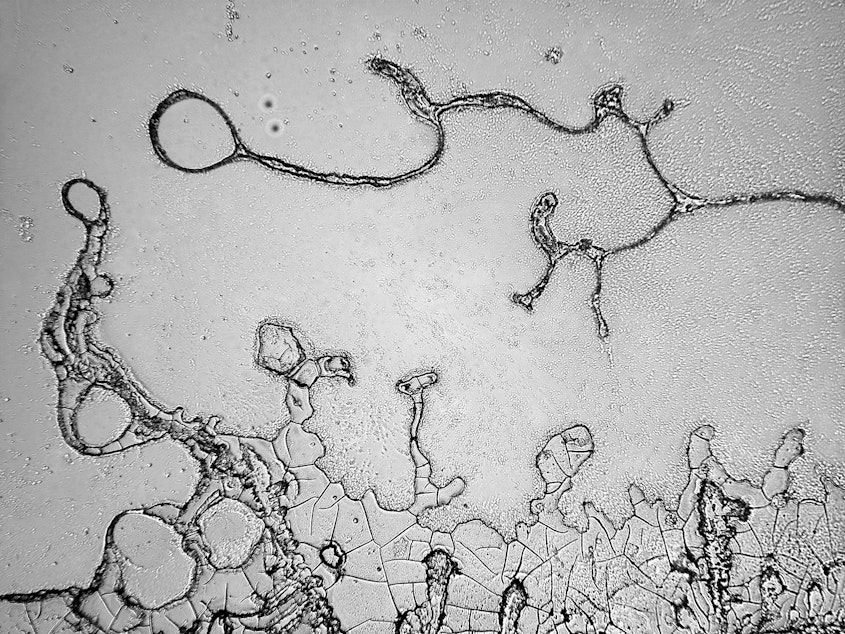Photographer Maps Emotional Terrain, One Tear At A Time
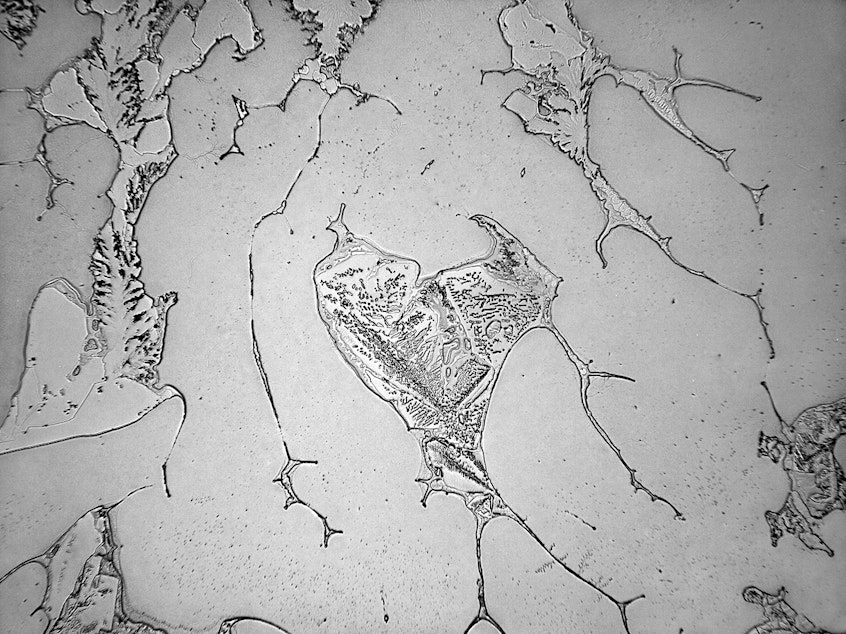
When you first view Rose-Lynn Fisher's photographs, you might think you're looking down at the world from an airplane, at dunes, skyscrapers or shorelines. In fact, you're looking at her tears.
The Los Angeles-based photographer's project, The Topography of Tears, stemmed from a curiosity steeped in emotional release. After losing contact for years, Fisher reconnected with a close friend — who passed away soon after.
Her tears at the time, she says, were of grief and gratitude in similar proportions. In the midst of her mourning, she felt a sudden curiosity.
"I wondered, 'What do tears look like, really, if I could see them up close?' " she says. "The corollary to that was wondering if every tear looks the same, if a tear of one emotion would look like that of another."
To find out, she collected a tear on a glass slide and photographed it with a digital microscopy camera mounted on a vintage microscope.
When she examined the first tear, magnified 100 times, the result looked like an aerial photograph — "except instead of looking down on the land, I'm looking at my emotional terrain," Fisher says.
That sense of surprise sparked the decadelong project.

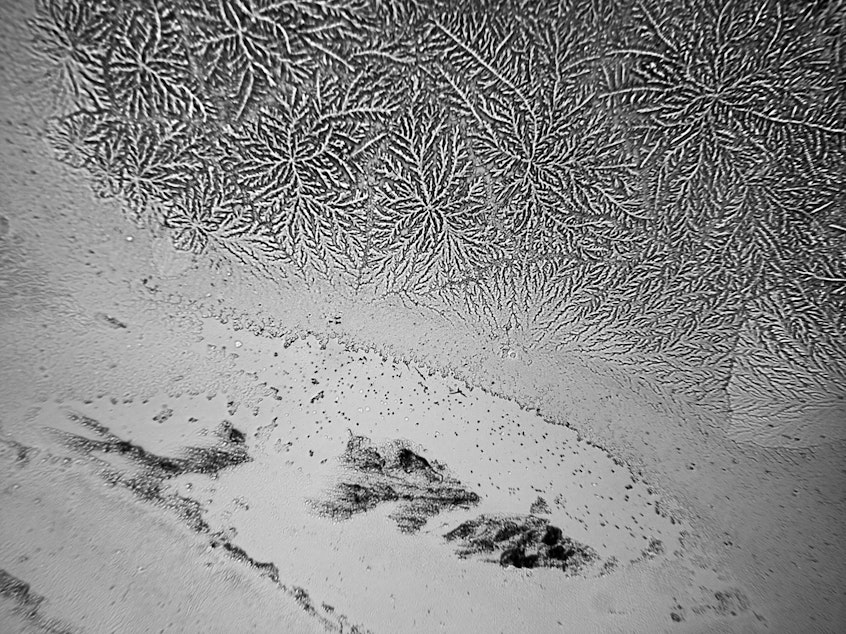
Since 2008, Fisher has kept slides everywhere, in her purse, in drawers at home, ready to collect samples anytime. When she cried — whether from grief, elation or onions — she collected a tear and wrote down how she felt.
Several factors influenced what the images looked like: whether the tear was air-dried or compressed, the volume of tear fluid, chemicals the tear interacted with, the settings on the camera and microscope, and how Fisher processed and printed the photograph.
Some tears contained little of visual interest; others generated dozens of images. Like any landscape photographer, Fisher chose the elements — in this case, different patterns and textures within a single tear — she wanted to include in the frame.
"When I'm looking through a microscope, I'm applying the same sensibility as taking any other picture," Fisher says.
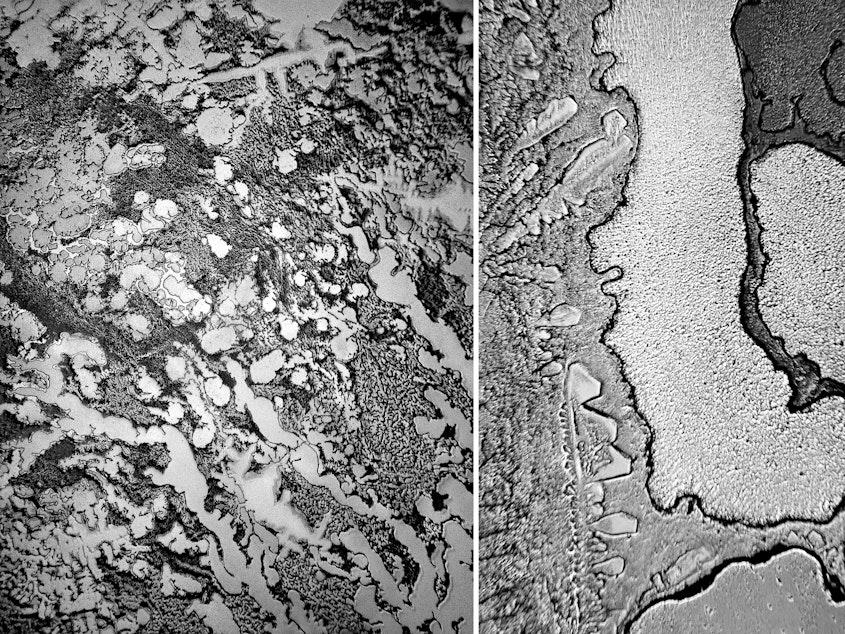
Even though Fisher uses scientific equipment and processes to make her images, the project isn't scientific, and it isn't meant to be. Rather than document her tears' biological properties, she instead reflects on "their existential and poetic nature." When making an image, Fisher does what so many photographers do: searches for meaning in what's in front of her.
In making this work, Fisher discovered that her emotions weren't so simple and clear-cut.
"I had never really contemplated tears before, or paid attention to the nuance of my own emotions," Fisher says.
She found that tears could help break down barriers that words couldn't. Often after crying, "the circuits [would] just connect," she says. Whether the tears spurred empathy, compassion, remorse or forgiveness, Fisher could move forward in a way that she couldn't have before.
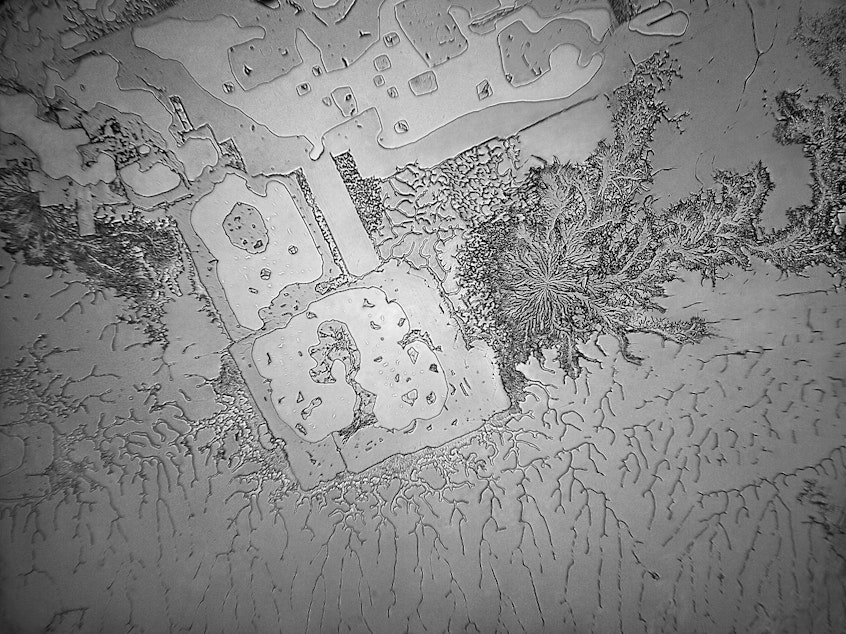
Many cultures view tears as shameful, a sign of weakness. But for Fisher, they are a force for unity and connection: our deepest responses to life's joys and tragedies, regardless of race, gender or nationality.
"In these times particularly, I think it matters a lot to find our essential similarities with one another," she says. A tear, Fisher says, is a microcosm of our larger human experience, like a drop of water in an ocean.
There's also poetry in the idea that our emotional terrain bears visual resemblance to the physical world; that our tears can look like the vistas we see out an airplane window. Fisher's images are the only remaining trace of these places, which exist during a moment of intense feeling — and then vanish. [Copyright 2018 NPR]
